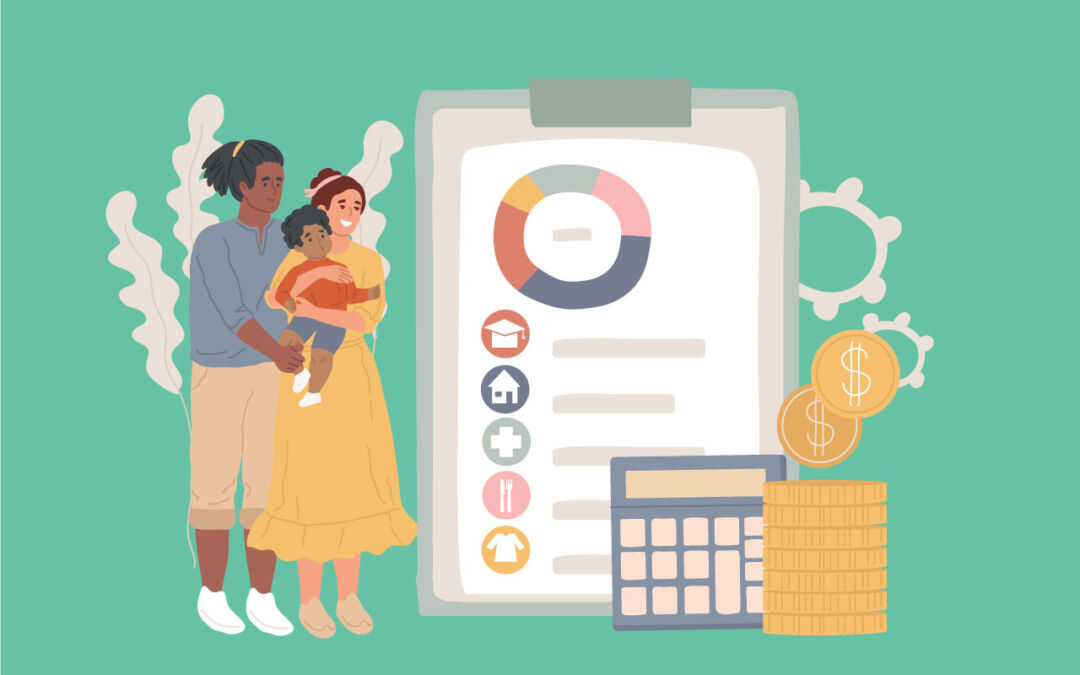Enhanced Child Tax Credit helped U.S. families afford life-enhancing necessities and cope with inflation

Amid ongoing congressional debate over expanding the Child Tax Credit for U.S. families, it’s important to understand why the fears about the expansion of that tax credit in 2021 were wrong. One of the more prominent concerns voiced at the time was that families who qualified for the expanded tax credit would spend the additional money unwisely, even perhaps using it to buy illicit drugs.
These concerns were offensive on many levels. One never hears those same legislators worrying about the spending habits of the families or individuals enrolled in other government programs, such as the mortgage interest deduction, the estate tax exemption, or corporate fossil fuel energy subsidies. But the concerns also are empirically wrong.
A new working paper published today—and set to be included in a special issue of the Annals of the American Academy of Social and Political Sciences this summer—synthesizes the large body of evidence on how parents and guardians spent the enhanced Child Tax Credit in 2021. The researchers review both transactional and survey data, including the Census Household Pulse Survey, the Consumer Expenditure Interview Survey, and the Survey of Household Economics and Decisionmaking. They find that most families spent the bulk of the additional money—which came in the form of monthly advance payments from the federal government—on necessities such as child care, food, and school supplies.
The working paper’s authors—Jonathan Fisher, previously with the Washington Center for Equitable Growth and now at the U.S. Census Bureau; Jake Schild from the U.S. Bureau of Labor Statistics; and David S. Johnson from the National Academies of Sciences, Engineering, and Medicine and a Research Advisory Board member at Equitable Growth—make four primary observations.
First, the bulk of the evidence suggests that around half of the households that received the expanded Child Tax Credit between July 2021 and December 2021 mostly spent it all, and that about half of these payments were spent within 3 months. The authors also note that during the early months of distribution, a higher proportion of respondents reported saving their payments. During the last few months of distribution, the percentage of savers declined, and the percentage of respondents using their payment for spending increased.
Second, a significant portion of households used the expanded CTC payments to meet basic needs, especially child-related spending. This spending was directed toward child care expenses, children’s activities, school supplies, and children’s clothing.
Third, these families spent the newly allocated CTC money differently depending on their incomes. A higher percentage of low-income households reported spending these funds to pay down debt, while high-income households were more inclined to save the money. In terms of general spending categories, low-income households tended to allocate a higher percentage of their payment toward household necessities, such as food, clothing, and utilities, relative to high-income households.
When it came to spending related to children, low- and high-income households both spent the money on children, but on different categories of goods and services. Low-income households tended to prioritize spending on books and supplies or spending time with their children. High-income households allocated a larger proportion of their payment to child care expenses. Because income and race are highly correlated in the United States, the pattern of use by race mostly followed the income results. When researchers controlled for income, the difference in spending response by race diminished.
Fourth, the expanded CTC payments helped families mitigate the negative impacts of rising prices. These payments were distributed during a time of high inflation amid the serious supply chain problems that were afflicting the U.S. economy amid the COVID-19 pandemic. The 2021 CTC payments prompted households to increase their overall spending, but the presence of inflation dampened the purchasing power of those payments. And approximately 70 percent of those households that experienced negative consequences due to inflation reported that the CTC payments aided them in managing the impact of rising prices.
Unlike today’s ongoing congressional debate about expanding the Child Tax Credit anew, which is about increasing the amount of the annual credit for some low- and middle-income households, the 2021 CTC payments were paid monthly. This was unique and could make the findings above less easily extrapolatable to an expansion of the CTC this year.
But past research on the Earned Income Tax Credit, which is paid as an annual lump sum during tax season, might provide policymakers with some evidence of families’ responses to larger, lump sum CTC payments, were they to come to pass this year. Research demonstrates that the annually distributed Earned Income Tax Credit, which acts as a form of forced savings, is primarily spent on durable goods, such as automobiles, apparel, and housing. Some EITC payments are spent on food, especially for households receiving smaller payments, but families have a greater propensity to spend their EITC payments on durable goods because of that credit’s larger size and annual lump-sum characteristics.
In contrast, the 2021 expanded CTC payments enabled families to deal with immediate monthly financial needs, be they debt repayments, food, child care expenses, and other things to support their children. In neither case did the researchers find any evidence of these payments being spent on illicit drugs or nonessential purchases.
The wealth of evidence presented in this new working paper about the efficacy of the 2021 expanded Child Tax Credit going toward immediate family necessities indicates that Congress would be wise to bring the monthly credit back. In addition to reducing the childhood poverty rate in the United States to a historic low, the enhanced 2021 CTC payments also helped families get by throughout the year. Almost two-thirds of the families who received the expanded Child Tax Credit said the monthly payments made it easier for them to budget, and more than 75 percent reported the payments eased their monthly financial burdens.
This increased sense of financial security may be why 95 percent of these families prefer monthly benefits or biweekly CTC payments, while only 5 percent prefer an annual payment. The co-authors of the working paper say that one reason families prefer monthly payments may be the higher consumption variability low-income households otherwise tend to experience, economic parlance for swings in well-being. In other words, the switch to a recurring monthly payment may have allowed households to plan their spending in order to ensure their standard of living stays consistent throughout the year.
Whatever Congress decides to do with the Child Tax Credit this year, hopefully future debates on the subject focus on the evidence—specifically, how the enhanced CTC payments reduced child poverty, did not lead the breadwinners of families to exit the U.S. labor market, helped families afford daily economic necessities, and allowed their children to thrive.
Did you find this content informative and engaging?
Get updates and stay in tune with U.S. economic inequality and growth!





